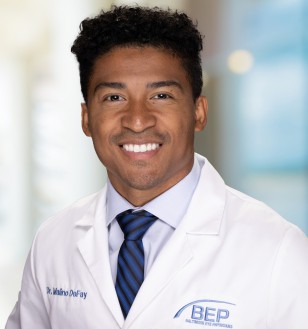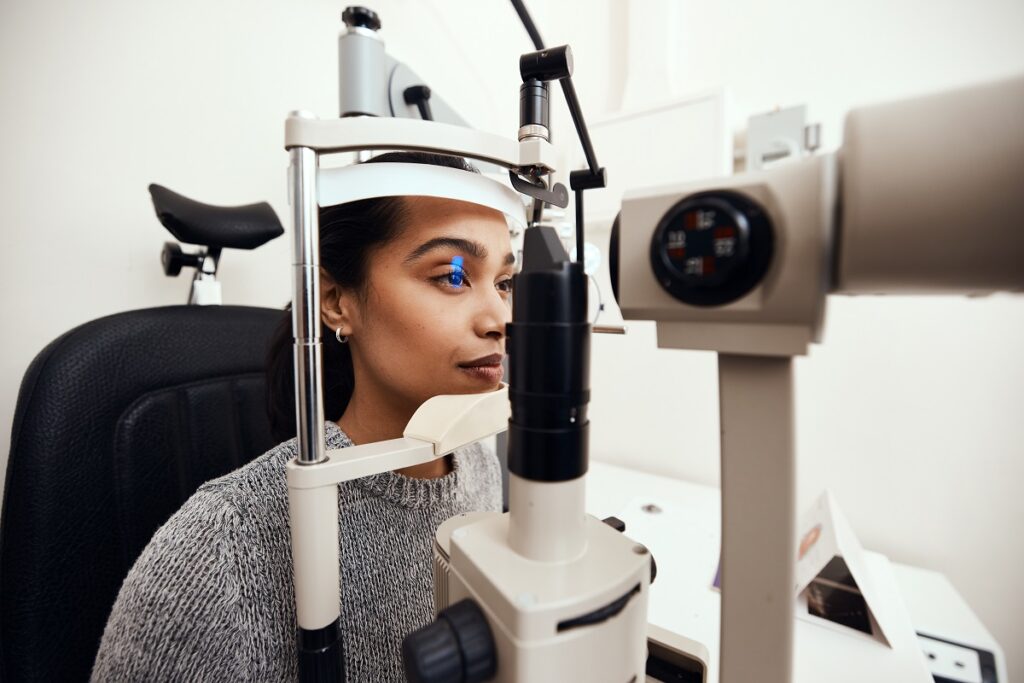Expert Eye Doctor in Riverside: Your Vision is Our Priority
Expert Eye Doctor in Riverside: Your Vision is Our Priority
Blog Article
The Comprehensive Eye Exam: What to Anticipate Throughout Your Visit to the Eye Physician
A visit to the eye medical professional for an extensive eye examination is greater than a regular exam; it is an important action in protecting your visual health. From the initial discussion of your clinical history to the precision of the aesthetic skill examination, each component of the examination serves a details objective. But just what occurs throughout the eye health evaluation, and how does it affect the prescription procedure? Recognizing these aspects is essential for those who desire to keep optimum sight. As we check out each element, the importance of follow-up suggestions will certainly likewise end up being clear.
First Assessment
The first appointment throughout an eye exam works as an important foundation for recognizing an individual's visual wellness requirements. This phase establishes the tone for the entire examination process, allowing the eye doctor to gather important details regarding the patient's clinical background, lifestyle, and particular vision worries. By meticulously assessing any pre-existing problems, medications, or previous surgical procedures, the eye care expert can tailor the examination to resolve specific needs effectively.

In addition, the first consultation is an opportunity for people to voice any type of inquiries or concerns, cultivating a collaborative partnership with their doctor. This communication not just guarantees that the person feels educated and comfortable yet additionally encourages them to get involved proactively in their eye health and wellness administration. Collectively, these conversations allow the optometrist to develop an individualized assessment strategy, making certain optimum care and accurate medical diagnosis.
Aesthetic Skill Examination
Kicking off the core components of an eye exam, the visual skill test is made to examine the intensity and clearness of a patient's vision. This essential assessment helps figure out just how well an individual can discern letters or symbols at a standard distance, normally utilizing a Snellen graph (Eye Doctor). The chart consists of rows of letters that lower in dimension from top to bottom, with the patient positioned at a normal distance of 20 feet
During the test, the individual is asked to cover one eye and check out aloud the smallest line of letters they can see plainly. This process is repeated for the various other eye. The results are videotaped as a portion, with 20/20 vision suggesting typical aesthetic acuity-- where the individual can see at 20 feet what an individual with typical vision can see at that distance.
The visual skill test also determines possible refractive errors such as myopia, hyperopia, or astigmatism, which could require corrective lenses. By establishing a baseline of aesthetic performance, the test is an important analysis tool that aids the eye treatment specialist in creating a suitable treatment plan customized to the client's distinct aesthetic requirements.
Eye Health Evaluation
Following the visual skill examination, a comprehensive eye health and wellness analysis is carried out to make certain the overall wellness of the eyes. This essential section of the eye test involves an extensive assessment of both the inner and exterior frameworks of the eye. The eye doctor or optometrist starts by checking out the eyelids, cornea, conjunctiva, and sclera for any kind of indications of infection, inflammation, or irregularities. Using specific equipment like a slit lamp, the professional obtains a magnified view of the eye's anatomy, enabling comprehensive examination.
Following, interest changes to the internal structures. Through making use of ophthalmoscopy or fundus photography, the linked here retina, optic nerve, and blood vessels are meticulously reviewed. This action is important for determining problems such as retinal detachment, glaucoma, or diabetic person retinopathy. Oftentimes, student expansion is performed to improve visibility of the interior eye frameworks, although this may lead to temporary light sensitivity for the person.
Furthermore, intraocular pressure is gauged to screen for glaucoma risk. This is typically done utilizing tonometry, which can find raised pressure levels that may recommend possible damage to the optic nerve. Collectively, these analyses form an extensive analysis to keep ocular health and wellness.
Refraction and Prescription
How does one ensure optimal vision? A critical action exists in the process of refraction and getting an exact prescription. Refraction is an innovative treatment performed by eye treatment specialists to figure out the accurate lens power needed to fix refractive mistakes such as nearsightedness, hyperopia, astigmatism, and presbyopia. The objective of this procedure is to examine exactly how light bends as it goes through the eye, allowing the professional to determine whether rehabilitative lenses are required for improved aesthetic acuity.
During the refraction process, the client is asked to browse a phoropter, a gadget which contains numerous lenses. The professional will systematically transform these lenses and ask the client to contrast quality between alternatives till the finest feasible vision is accomplished. This procedure is essential in crafting an exact prescription that specifies the suitable lens power for glasses or get in touch with lenses.
The prescription originated from this treatment not only enhances vision yet also works as a foundation for picking suitable restorative eyewear. It is vital to make certain that prescriptions are regularly upgraded, as changes in vision can take place in time, emphasizing the relevance of regular eye exams. This meticulous interest to information helps preserve clear, comfy vision in day-to-day life.
Follow-Up Recommendations

During a follow-up go to, the eye medical professional will certainly perform a collection of examinations to evaluate visual acuity and check for any type of adjustments in vision that might require an upgrade to the prescription. In addition, the follow-up check it out provides a chance to discuss any kind of pain or issues experienced with existing eyeglasses. Changes can be made to make sure comfort and efficacy, whether via lens adjustment or frame changes.
For people with continuous conditions such as glaucoma, diabetes-related eye concerns, or macular deterioration, even more regular follow-ups may be required. These appointments are critical for managing and potentially slowing down the development of eye condition. Abiding by these suggestions can substantially add to preserving visual wellness and preventing long-term difficulties.
Conclusion
The extensive eye examination is an essential process for keeping aesthetic health, incorporating a comprehensive analysis of medical background and vision concerns. Secret parts include the aesthetic acuity examination, which reviews eyesight quality, and the eye health evaluation, which checks out the overall problem of the eyes. Refraction examinations help identify the specific lens prescription necessary for ideal vision correction. Follow-up recommendations supply guidance for continuous eye treatment, ensuring that any type of potential concerns are dealt with promptly and effectively.
A visit to the eye physician for a detailed eye test is more than a routine check-up; it is an essential action in guarding your aesthetic health and wellness.Kicking off the core parts of an eye exam, the aesthetic acuity test is developed to evaluate the intensity and clearness of a client's vision.Adhering to the aesthetic acuity examination, a detailed eye health evaluation is carried out to ensure the general wellness of the eyes. These gos to enable the eye care professional to check changes in vision, upgrade prescriptions, and analyze the general wellness of the eyes. click reference Trick components include the visual skill test, which evaluates sight clarity, and the eye wellness assessment, which examines the total problem of the eyes.
Report this page